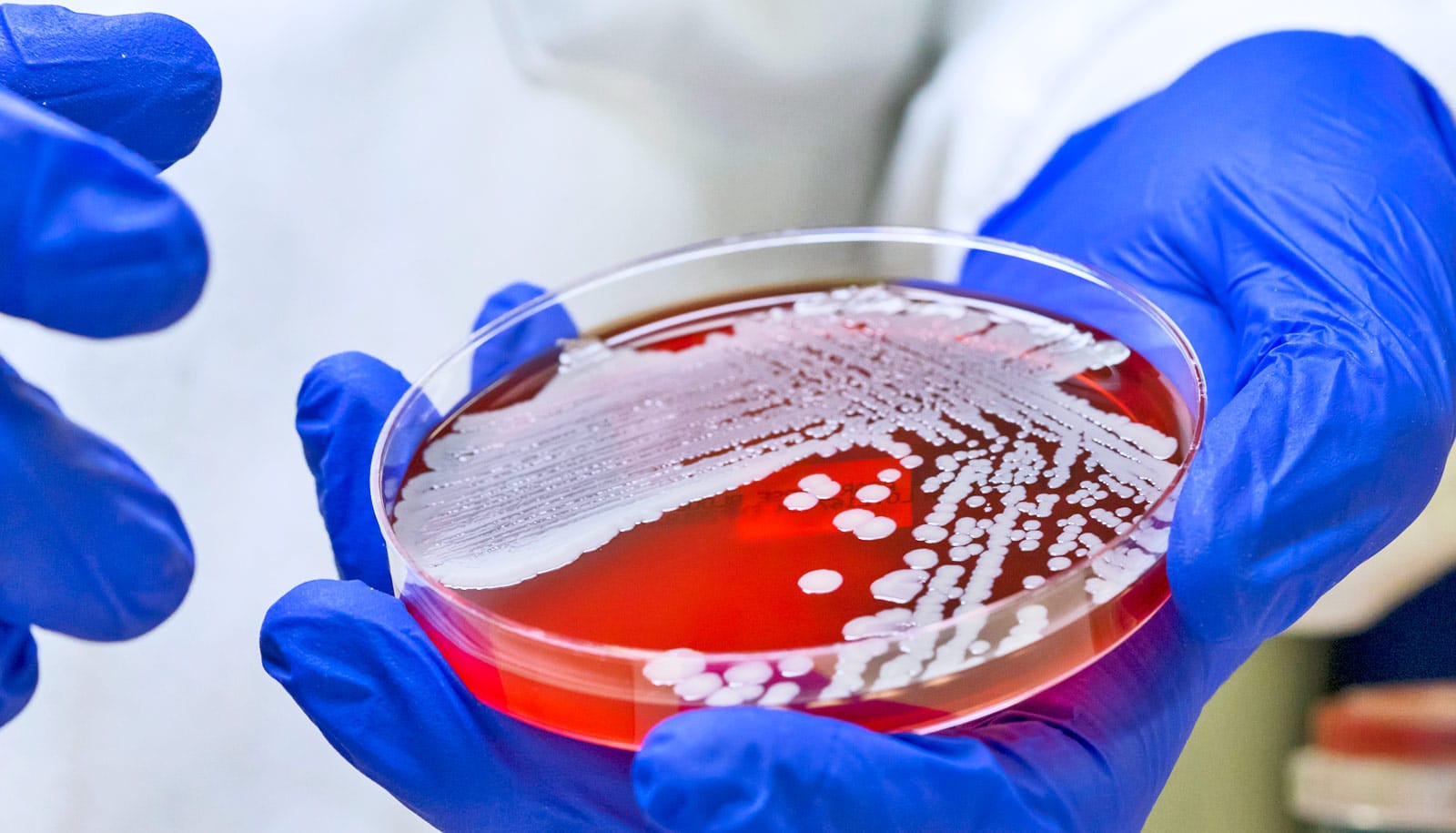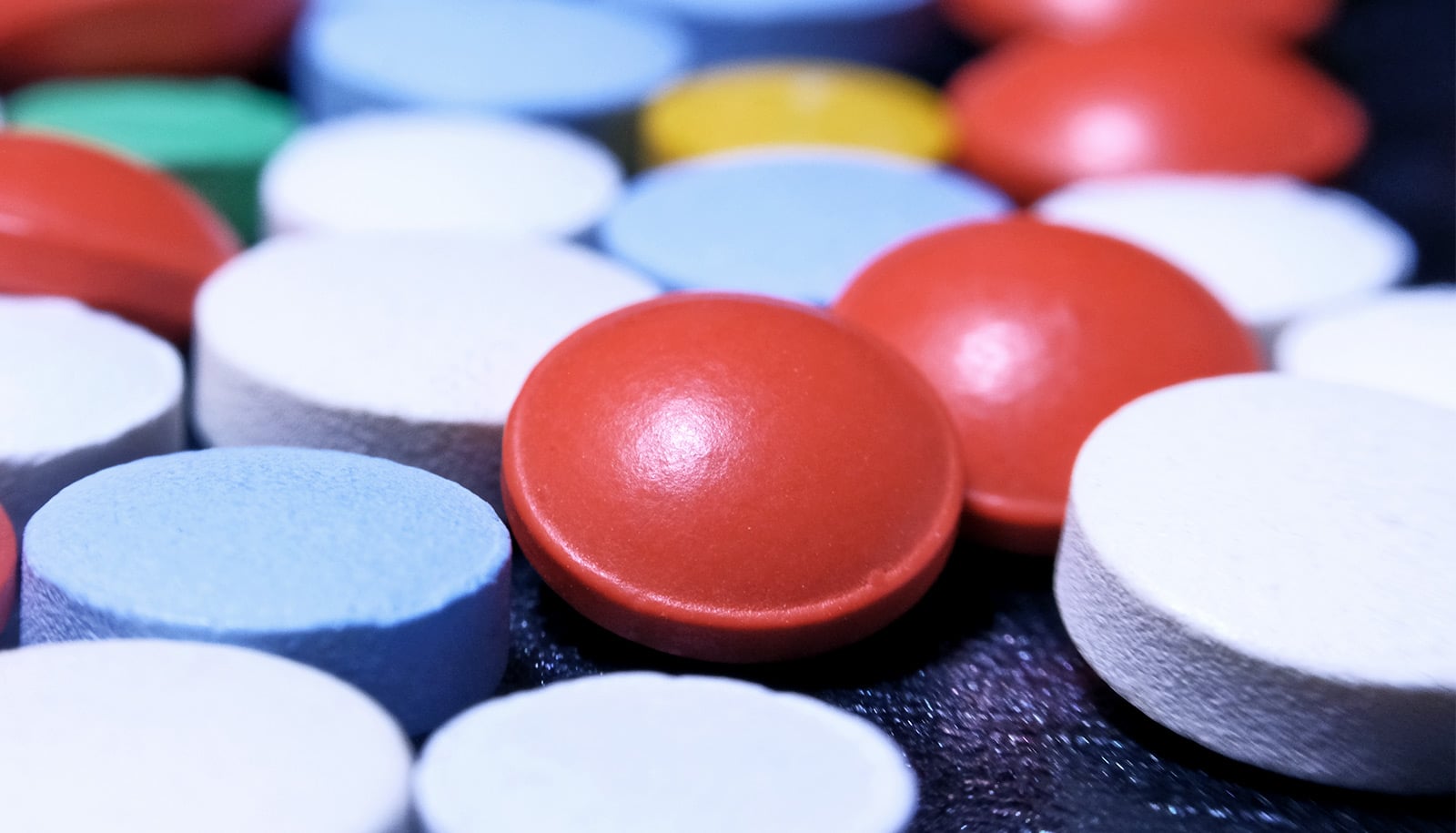Researchers report that a new self-sterilizing polymer can kill a range of viruses and drug-resistant bacteria in just minutes—including methicillin-resistant Staphylococcus aureus (MRSA).
“We were exploring a different approach for creating antimicrobial materials when we observed some interesting behavior from this polymer and decided to explore its potential in greater depth,” says Rich Spontak, professor of chemical and biomolecular engineering at North Carolina State University and co-corresponding author of the paper in Materials Horizons.
“And what we found is extremely promising as an alternate weapon to existing materials-related approaches in the fight against drug-resistant pathogens. This could be particularly useful in clinical settings—such as hospitals or doctor’s offices—as well as senior-living facilities, where pathogen transmission can have dire consequences.”
The polymer’s antimicrobial properties stem from its unique molecular architecture, which attracts water to a sequence of repeat units chemically modified (or functionalized) with sulfonic acid groups.
“When microbes come into contact with the polymer, water on the surface of the microbes interacts with the sulfonic acid functional groups in the polymer—creating an acidic solution that quickly kills the bacteria,” says co-corresponding author Reza Ghiladi, an associate professor of chemistry.
“These acidic solutions can be made more or less powerful by controlling the number of sulfonic acid functional groups in the polymer.”
The researchers tested the polymer against six types of bacteria, including three antibiotic-resistant strains: MRSA, vancomycin-resistant Enterococcus faecium, and carbapenem-resistant Acinetobacter baumannii. When 40% or more of the relevant polymer units contain sulfonic acid groups, the polymer killed 99.9999% of each strain of bacteria within five minutes.
The researchers also tested the polymer against three viruses: an analog virus for rabies, a strain of influenza, and a strain of human adenovirus.
“The polymer was able to fully destroy the influenza and the rabies analog within five minutes,” says coauthor Frank Scholle, an associate professor of biological sciences. “While the polymer with lower concentrations of the sulfonic acid groups had no practical effect against human adenovirus, it could destroy 99.997% of that virus at higher sulfonic acid levels.”
The fact that the polymer’s antimicrobial effect could progressively worsen over time, as sulfonic acid groups neutralized when they interacted with positively charged ions (cations) in water concerned the researchers. However, they found exposing the polymer to an acid solution fully “recharged” it.
“In laboratory settings, you could do this by dipping the polymer into a strong acid,” Ghiladi says. “But in other settings—such as a hospital room—you could simply spray the polymer surface with vinegar.”
This “recharging” process works because every time one of the negatively charged sulfonic acid groups combines with a cation in water—which can happen when the polymer comes into contact with microbes—the sulfonic acid group becomes electrically neutral. That makes the acid group ineffective against microbes.
But when the neutralized polymer is subjected to acid, those functional groups can exchange bound cations with protons from the acid, making the sulfonic acid groups active again—and ready to kill microbial pathogens.
“The work we’ve done here highlights a promising new approach to creating antimicrobial surfaces for use in the fight against drug-resistant pathogens—and hospital-acquired infections in particular,” Ghiladi says.
“Functional block polymers like this are highly versatile—usable as water-treatment media, soft actuators, solar cells and gas-separation membranes—and environmentally benign since they can be readily recycled and re-used,” Spontak adds. “These features make them particularly attractive for widespread use.
“And this work focused on only one polymer series manufactured by Kraton Polymers,” Spontak says. “We are very eager to see how we can further modify this and other polymers to retain such effective and fast-acting antimicrobial properties while improving other attributes that would be attractive for other applications.”
Bharadwaja S. T. Peddinti, a PhD student, is the paper’s first author. Additional coauthors are from NC State and Procter & Gamble.
The Nonwovens Institute at NC State supported the work. The NC State Cellular and Molecular Imaging Facility, which the National Science Foundation supports, also provided funding.
Source: NC State

